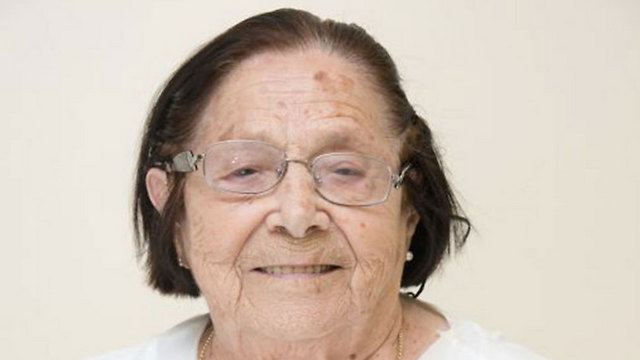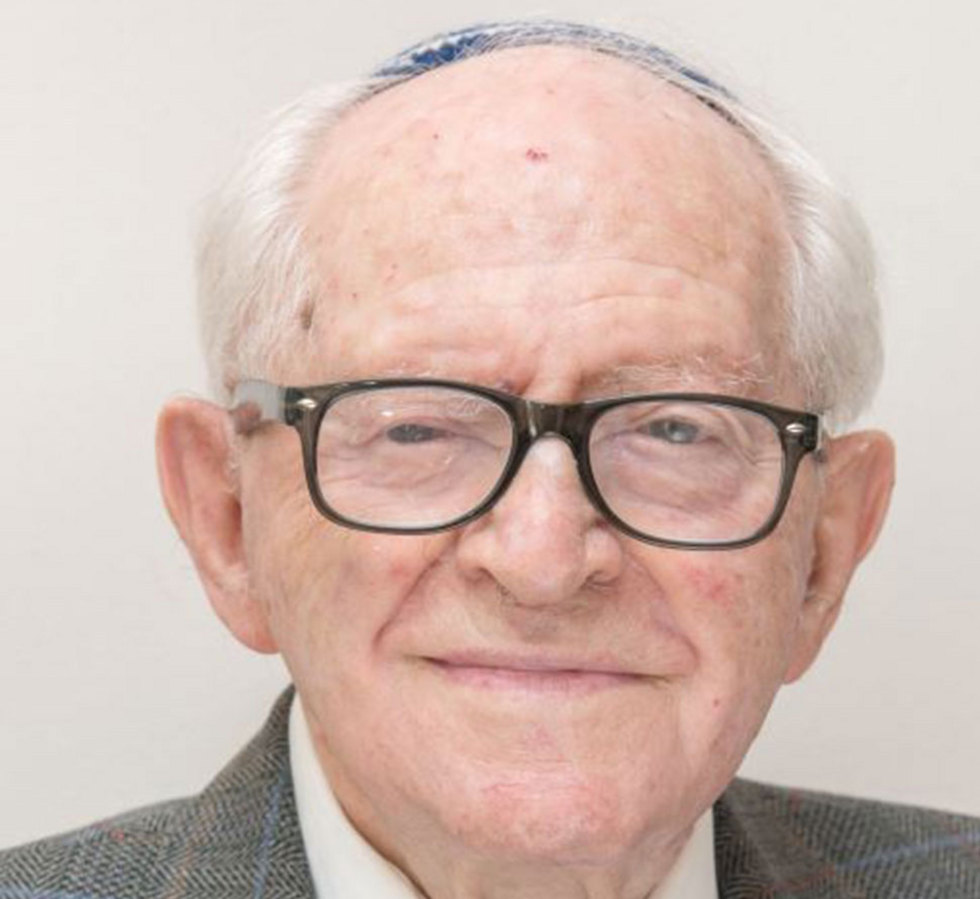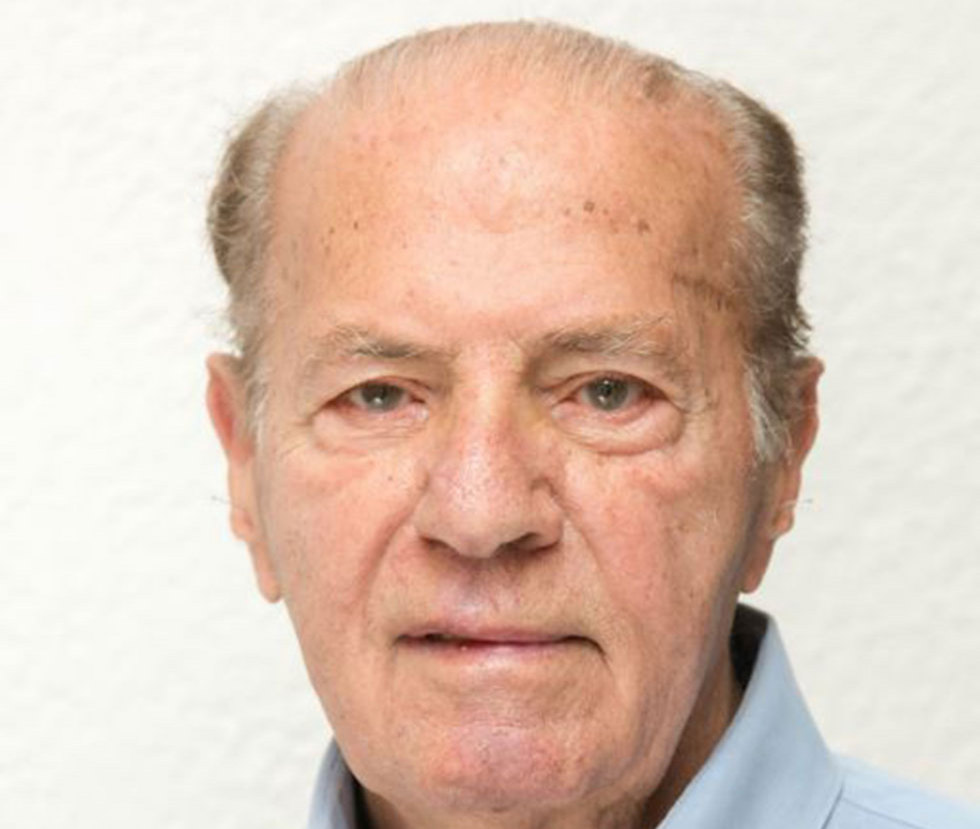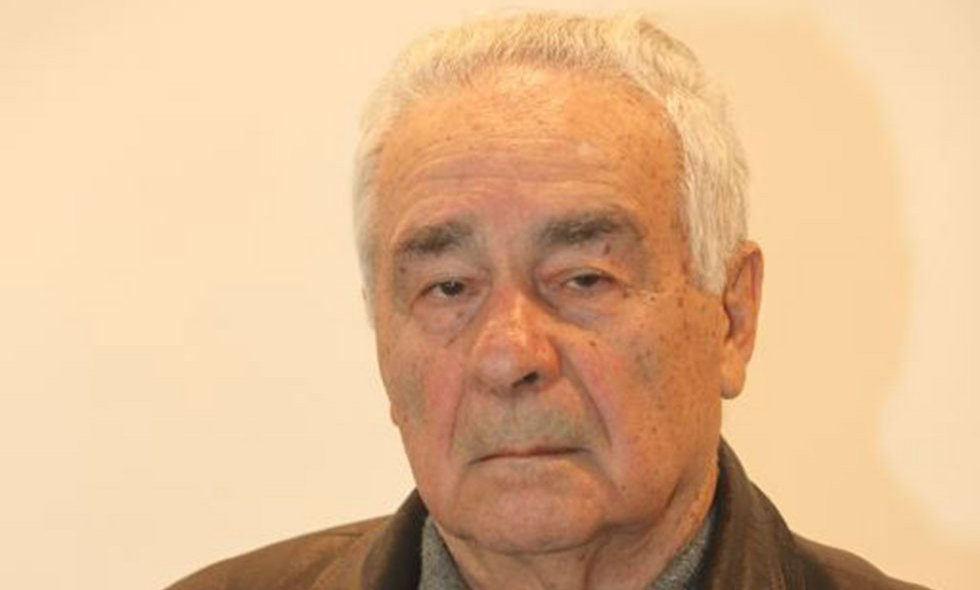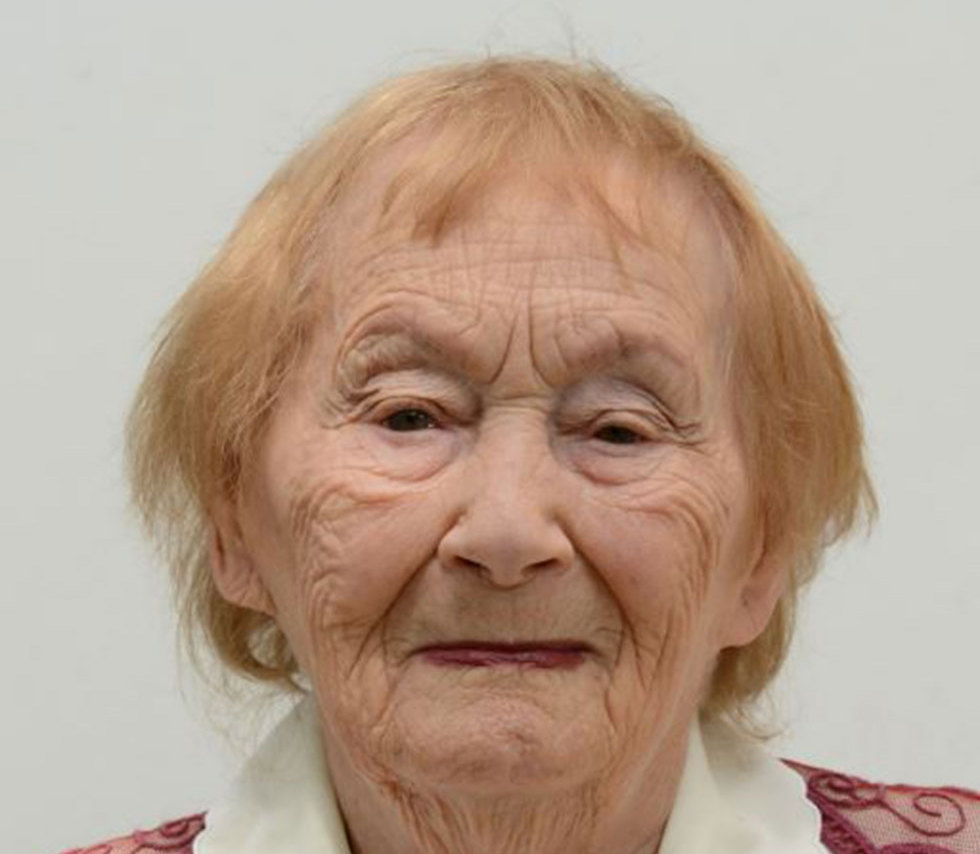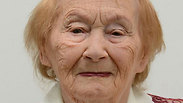
Life stories of the six survivors to light torches on Holocaust Remembrance Day
The central theme for this year's ceremony is "Everything is Forbidden to Us, and Yet We do Everything": The Struggle to Maintain the Human Spirit during the Holocaust.
The Ceremony for Holocaust Martyrs’ and Heroes’ Remembrance Day will open on Wednesday at Yad Vashem in Jerusalem, during which six Holocaust survivors will light six torches, representing the six million murdered by the Nazis during World War 2.
The central theme for this year's ceremony is "Everything is Forbidden to Us, and Yet We do Everything": The Struggle to Maintain the Human Spirit during the Holocaust.
Herewith follows the stories of the six survivors chosen as this year's honored torchlighters.
First torch - Sara Kain:
Sara Kain was born in 1919 in Kassa (Košice), Czechoslovakia, to a religiously traditional family of eight. In April 1944, a month after the Germans occupied Hungary, the Jews of Kassa and the neighboring towns were concentrated into a ghetto. In May, they were transferred to a brick factory. Sara, her sister Ethel and her parents were deported to Auschwitz in early June 1944.
On arrival at Auschwitz, Sara’s parents were led to the gas chambers. The girls were processed as inmates at the camp. On discovering their fate, Sara wept bitterly: "In an instant, I realized that I had no one but my sister."
Sara suffered from numerous sicknesses in the camp. At one roll call, Ethel was selected for the gas chambers. With help from acquaintances, Sara managed to get Ethel back.
In April 1945, the camp was liberated by the US Army. After a period of recuperation, she and Ethel decided to make their way to Eretz Israel, where their brother and sister lived.
In June 1946, Sara, Ethel and Miriam took the boat “HaChayal HaIvri” to Israel which was detained by the British. After being detained at Atlit they made their way to Gan Shmuel.
Sara married Abraham whom she had met as a girl in Kassa. The couple has three children, ten grandchildren, and 14 great-grandchildren.
Second torch - Robert Tomashof
Robert Tomashof was born in 1916 in Dolný Kubín, Czechoslovakia, to a religious family of eight. In 1933, one of Robert’s brothers immigrated to Eretz Israel. His father passed away that same year.
In March 1939, when the fascist regime rose to power, Robert was forced into the Slovak army, building labor camps for Jews, constructing airfields and expanding the channel of the Danube to prevent flooding. In 1942, Robert’s mother and brothers, William and Julius, were deported to Auschwitz and murdered. Robert fled to his sister’s home in Žilina. He acquired false papers under a Christian name, but had to run again when an acquaintance recognized him.
Using a new set of false papers in early 1944, Robert moved to Budapest, where he tried to arrange immigration papers to Eretz Israel. He received new forged ID cards, but he did not stamp them properly and was arrested after the Germans invaded Hungary in April 1944.
Robert was imprisoned in Budapest while awaiting deportation to Auschwitz. At the jail, he volunteered to help fill out multilingual forms. In one of the office’s drawers, he found stamped laissez-passer documents and took one. After the clerks left their workplace, he waited for the shift change, took a stack of forms, and told the building guard that he had to bring them to be inspected outside the jail. The guard told him to wait until he finished locking up; when he disappeared from sight, Robert rushed to the gate, showed the guards the laissez-passer, and fled.
Acquaintances in Budapest organized a new set of forged papers for Robert, as well as work at a local factory. When suspicions regarding his identity were aroused, he fled by train and on foot to the city of Arad, Romania. In August 1944, following a false rumor of ships sailing to Eretz Israel, Robert came to the pre-departure rally point; he was arrested and put on a transport to Hungary. However, the train stopped at the Hungarian border, and the guards left. The train turned back to Arad, and Robert was transferred to a labor camp in the city of Târgu Jiu. The Red Army liberated the city at the end of August 1944.
Back in Bucharest, Robert helped establish an aid center for Czechoslovakian refugees and provided them with papers that granted them freedom of movement. Later he moved to Prague, where he served as secretary of the local Zionist organization, aiding immigrants to Eretz Israel and procuring armaments for the yishuv. In 1946, he married Miriam, an Auschwitz survivor, and they immigrated to Israel in 1948.
Robert and Miriam have a son, a daughter, and two granddaughters.
Third torch - Jehosua Hesel Fried
Jehosua Hesel Fried was born in 1930 in Velké Kapušany, Czechoslovakia, to a family of nine. His father was the community’s rabbi, the scion of a Hassidic rabbinical family.
In 1938, the region where Jehosua lived was annexed to Hungary. In April 1944, Hungarian police and Gestapo officers deported the Jews of the town to the Ungvar ghetto. In May, the ghetto’s Jews were deported to Auschwitz. Jehosua’s hair and sidecurls were shaved off, and he was put to work cleaning train cars, gathering victims’ possessions, and cleaning the ditches by the ramp. Jehosua and his friends found valuables in these ditches and sold them to Polish inmates for food.
One day, Jehosua saw his sister Rachel, who lived in the shack near his side of the fence, and tossed her some food. As the son of the community rabbi and cantor, Jehosua tried to sing traditional melodies to his friends and raise their spirits at every opportunity.
In December 1944, Jehosua and his friends were taken to the Sachsenhausen camp, and from there to Lieberhausen. As the Red Army drew nearer, they were sent on a death march. At night, they slept in the snow. They were eventually transported to Mauthausen, where they had to eat snails and frogs to survive. All through their travails, the group helped and encouraged each other at every opportunity. After they were transferred to Gunskirchen, Jehosua contracted typhus. In May 1945, while they were saying the Sabbath eve prayers, the US Army liberated the camp.
After recovering in Linz, Jehosua returned to Velké Kapušany, where he found his sisters: Rachel had survived Auschwitz, and Sosana and Ester had lived out the war in Budapest under false identities. Sadly, his mother, brother and sister had been murdered in the gas chambers at Auschwitz.
Jehosua studied at a yeshiva in Košice. When it relocated to the US, he decided to immigrate to Eretz Israel, where his sister Zipora lived. Jehosua, Rachel and Sosana traveled to Italy via Germany, and in March 1947, boarded theMoledet, bound for Israel. The British detained the ship and transferred its passengers to detention camps in Cyprus, where Jehosua studied Hebrew. In February 1948, Jehosua finally arrived in Israel.
In 1952, Jehosua married Rivka, whose uncle had been with him in the camps. Jehosua and Rivka have three children, 14 grandchildren, and 33 great-grandchildren.
Fourth Torch – Joseph Labi
Joseph Labi was born in 1928 in Benghazi, Libya, to a family of 19. He was the grandson of Rabbi Eliyahu Labi, a rabbi and religious court judge in Benghazi. Joseph was a member of the Maccabi Zionist movement.
In 1938, when the Italian racial laws were extended to Libya, Joseph and his fellow Jewish students were transferred to a separate school bearing a Star of David. After Joseph's parents passed away in 1940, Joseph’s married brothers took him and his younger brothers under their wing.
In 1942, Joseph’s entire family was deported to the Giado concentration camp in Libya. The Libyan Jews were then deported to Italy, where they were interned at Castelnovo ne' Monti. In February 1944, the Germans sent them to Bergen-Belsen. At first, Joseph refused to eat because the food at the camp was not kosher, but after a week of hunger, he relented.
One of the camp’s prisoners, a religious Jew, proposed that Joseph have a bar mitzvah ceremony. "I put on tefillin," said Joseph. "He asked me to share food with those present, but I only had a small potato. Fortunately, a woman secured some perfume. I poured some on everyone’s hand and that was my bar mitzvah."
Joseph was transferred to France in a prisoner exchange deal in March 1945, and from there he made his way to Spain and Portugal. "When we reached Lisbon, we realized that that hell was over for us."
On returning to Benghazi, Joseph met soldiers from the British Army’s Jewish Brigade who suggested that he come to Eretz Israel. "I went to the train station. Somebody gave me a hat and dressed me in a Jewish Brigade uniform and put a bunch of forms in my pocket," said Joseph. "I boarded the train dressed as a soldier and we went to Alexandria.”
After being smuggled into Israel, Joseph lived on several kibbutzim, volunteered for the Palmach, and fought in Israel’s War of Independence.
He and his wife Yvonne have a son and daughter, seven grandchildren, and a great-granddaughter. He still has the tallit that he received at his bar mitzvah ceremony at Bergen-Belsen.
Fifth Torch – Chaim Grosbein
Chaim Grosbein was born in 1937 in Dołhinów, Poland (today Dauhinava, Belarus), to a religious family of four. His father owned a butcher shop and leased land.
In July 1941, the Germans occupied Dołhinów. In April 1942, the town's Jews were interned in a ghetto. When Chaim’s father and cousin left the ghetto with one of the forced labor groups, the Germans murdered them both. During an Aktion later that month, Chaim and his family hid in a pit under a stove. When the refuge was discovered, most of them were forced out and then shot or beaten to death. Chaim and his cousin Rishka were hiding in the corners of the pit, and went undetected.
A few days later, a relative came to persuade Chaim and Rishka to run away with him, but they refused. He was later shot to death.
One night, Chaim and Rishka left the pit and went to Rishka’s home in search of her mother, Lea. They found their aunt Dvosia, who took them to their neighbor, Gabriel Rubin. His home was on the edge of the ghetto, and during the next Aktion, they all escaped and headed for the woods, where they joined a group of Jews who had fled the nearby towns.
The partisans in the woods decided to send a group of Jews, including Chaim, behind enemy lines.
During the long march, they were ambushed by the Germans and Chaim was shot in the leg. Dvosia carried him on her back, but ultimately she was forced to leave him behind. Russian partisans found Chaim and sent him to their infirmary, where a Jewish doctor operated on him without anesthesia. When the partisans abandoned the area, Chaim was left on his own. He slept in ditches in the ground, made a wooden spear for defense, learned to make fire, and hunted for food and water in the woods and nearby villages. When the opportunity arose, he took work herding cattle and performing other physical labor.
Two years later, Chaim reached a partisan camp and was sent to a Belarussian orphanage. He studied carpentry at a vocational boarding school and joined the Red Army. On furlough, he returned to Dołhinów, where he discovered that two of his aunts, including Dvosia, had survived.
In the early 1960s, Chaim immigrated to Israel. In 1965, he married Aliza; they have two children and five grandchildren.
Sixth Torch – Lonia Rozenhoch
Lonia Rozenhoch (née Wudka) was born in 1920 in Radom, Poland, to a family of five. Her father was a shoemaker and a member of the Bund, a socialist Jewish party.
At the age of just 17, Lonia began to study at the University of Warsaw. When Germany invaded Poland in September 1939, she returned to her parents’ home. In April 1941, all the Jews of Radom were interned in the city's ghetto.
One of Lonia’s friends proposed that she join him and flee to Soviet-occupied territory, but Lonia refused to leave her family. "That was a formative moment in my life," recalled Lonia. "That was when I decided that staying together was my motto."
Lonia married her sweetheart, Moniek Rakocz, but the couple was forced to part ways when she was sent to a labor camp in a weapons factory, together with her two sisters, Bella and Malka. There, too, she declined an offer by a Ukrainian laborer to escape the camp and live in a village under a false Christian identity.
In two Aktionen in August 1942, the Jews in the Radom ghetto were deported to Treblinka. Lonia’s mother, her husband Moniek and his family were all murdered there. Her father was probably murdered en route to the deportation trains. In July 1944, with the advance of the Red Army, Lonia and her sisters were sent on a death march across Poland. On 3 August, they were deported to Auschwitz.
At Auschwitz, the sisters managed to stay together, both where they slept and where they worked. At roll call, Lonia concealed her sister Bella’s bad back, so that she would not be selected for murder.
In December 1944, Lonia and her sisters were transferred to Ravensbrück and its sub-camp, Malchow. They were forced to work in a munitions plant. Lonia's leg had been injured by SS beatings at Auschwitz, but her sisters helped her until she was reassigned to work in the kitchen.
In April 1945, the sisters were released in a prisoner exchange deal. They went to Sweden, where Lonia began working as a teacher of child Holocaust survivors on behalf of Youth Aliyah. In March 1948, Lonia boarded a ship bound for Haifa.
She moved to Kibbutz Afikim, where she married Jacob and worked as a teacher of young immigrants.
Lonia and Jacob have three children, six grandchildren and three great-grandchildren.










